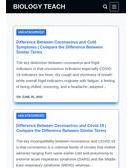Two kingdom classification system does not clarify the whole distribution of organism into two groups because some organism have character which are resemble to animals as well as plants for example Euglena have both type of character they have chlorophyll for the process of photosynthesis which is a plant character and as a animal which are included in kingdom animilia an other example is chlymedomonas , volvox etc which show the character of plants.
According to Three kingdom classification system
Ernest Hackle introduced the Three kingdom classification system in 1866, solve the first objection and produced 3rd kingdom protista for those organism which have character plant as well as animals.in kingdom protista all the organism which create problem in classification are included in kingdom Protista . so he classify all living organism into three kingdom which are:
kingdom Plantae Auto trophes ( Auto means self and trophs means taking food) autotrophes are those organism which makes their food itself by the process of Photosynthesis or nitrogen fixation. they are able to makes food by combining inorganic compound (Co2 + H2o + light ) to makes organic compound Glucose (C6H12O6) .these organism are almost all types of plants, fungi , Algae , cayano bacteria etc. these organism put in kingdom plantae
While the organism which cant prepared their own food are known as Hetrtrophes ( Hetro means other Trophes taking food ) they get their food from autotrophes in the form of leaves grass and meat and placed in kingdom Animilia. these organism are almost all types of animals including human. major types of bacteria some types of fungi etc.
This kingdom including organism which have character like both animals and plants are including in this group such as Euglena , Bacteria , Chlymedomonas etc these organism can produced their own food by photosynthesis because they have chlorophyll for the production of food .
Objections and Limitations
- Haeckel's system was not widely accepted, however, and microorganisms continued to be classified as plants (for example, bacteria and fungi) or animals (for example, protozoa).
- Nucleated and anucleated organisms were kept together in protists.
- Heterotrophic bacteria and fungi placed along with autotrophic algae.
- Engelkirk, P. G., Duben-Engelkirk, J. L., & Burton, G. R. W. (2011). Burton's microbiology for the health sciences. Philadelphia: Wolters Kluwer Health/Lippincott Williams & Wilkins.
- Trivedi P.C., Pandey S, and Bhadauria S. (2010). Textbook of Microbiology. Pointer Publishers; First edition.
- Tortora, Gerard J., Funke, Berdell R.Case, Christine L.. (2013) Microbiology :an introduction Boston : Pearson,


